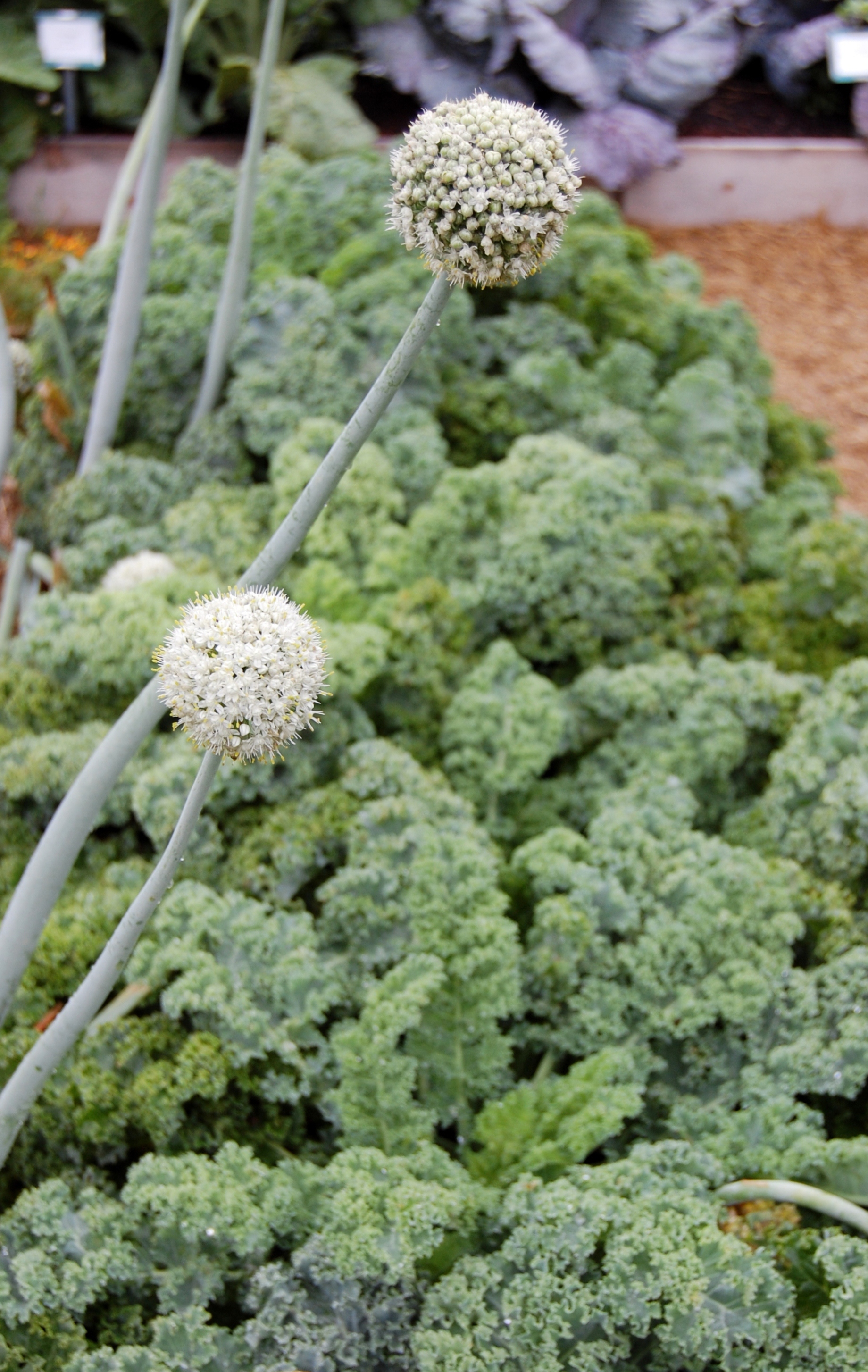 The Teaching Garden at Seed Savers Exchange demonstrates important seed saving concepts. Throughout the growing season, we'll discuss these concepts by taking a closer look at different beds in this garden. In a previous blog post, we looked at How Your Plants Pollinate. Our second stop on the tour is at the Life Cycle beds.
The Teaching Garden at Seed Savers Exchange demonstrates important seed saving concepts. Throughout the growing season, we'll discuss these concepts by taking a closer look at different beds in this garden. In a previous blog post, we looked at How Your Plants Pollinate. Our second stop on the tour is at the Life Cycle beds.
A plant can have one of three different life cycles depending on when it produces flowers and seed: annual, biennial, or perennial. To properly save seed, it's important to know the life cycles of the plants in your garden - it's not always as obvious as it seems!

The first bed contains some annual plant types: lettuce, radish, and pea (pictured below). An annual plant will germinate, grow, flower, and fruit in one growing season. When an annual has finished producing seed, the plant dies. To flower, lettuce will grow a large flower stalk and shed the lower leaves, producing white fluffy seeds. Radish roots enlarge, becoming too bitter and tough for eating. The above-ground radish plant will become big and bushy, producing white and purple flowers and edible seed pods. Pea plants will decline after flowering has finished, and the seeds will harden as the pods and vines turn yellow and dry out.


The second bed contains kale, Swiss chard, and onion, examples of biennial plant types. A biennial plant completes its life cycle over two growing seasons. In the first year, the plant focuses on vegetative growth by producing leaves and roots that store energy and nutrients. Most biennials (i.e. onion and kale) are harvested for eating during the first year of their life cycle. During winter, the plant conserves energy for the next growing season when it will flower and produce seed. Because biennials must overwinter, extra steps should be taken in colder climates to prevent damage to the underground parts. In this bed (pictured on the right), the onion were overwintered with straw mulch and are now flowering. The kale and Swiss chard will not flower and produce a seed crop until next year.
A perennial has a continuous growth cycle that can persist for many growing seasons. In general, a perennial will flower and fruit every year, but a tremendous amount of variation exists within perennials. Some perennial plants are woody and will flower and fruit after several years of juvenile growth, while others are herbaceous and die back every winter to newly flower and fruit in the spring. "Tender perennials" are very sensitive to cold temperatures and are grown as annuals in most climates. Several of our beds feature tender perennials like tomatoes, potatoes, eggplants, and okra that will die back at the end of the season due to cold weather.

Below you will find a list of common annuals and biennials, with tender perennials listed among the annuals. Use the following list as a guide, and refer to Suzanne Ashworth's Seed to Seed for information on specific crop types.
Until next time, happy gardening!
Annuals: amaranth, bean, broccoli*, corn, cowpea, cucumber, eggplant, fava, gourd, ground cherry, lettuce, lima, melon, mustard, okra, pea, peanut, pepper, poppy, potato, radish (non-daikon), runner bean, sorghum, spinach, squash, sunflower, tomatillo, tomato, watermelon
Biennials: beet, broccoli*, Brussels sprout, cabbage, carrot, cauliflower, celeriac, celery, chicory, Chinese cabbage, collard, endive, kale, kohlrabi, leek, onion, parsley, parsnip, radish (daikon), rutabaga, Swiss chard, turnip
*Broccoli is a biennial crop, but short season varieties act as annuals when planted early in the spring.






















